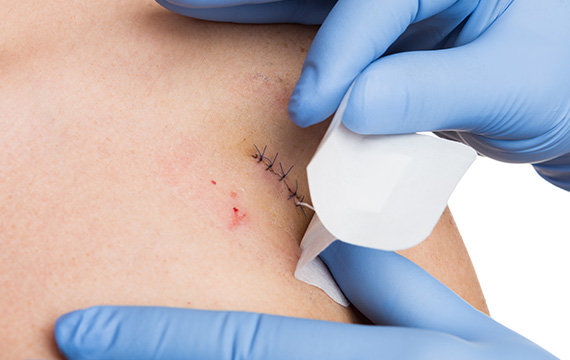Any time the skin is cut, a scar will result. Expect the scar to look lumpy and red for a period of at least several weeks, and to continue to improve over the following 18 months.
Following any surgery where the wound was closed with sutures, you may feel small lumps underneath the skin for up to three months following your procedure. These are dissolvable sutures below the top layer that help reinforce the wound while it heals.
You may get a reaction to your sutures. This may appear as one or more one or more bumps along the surgical scar, which often look like pimples. If this happens, you can apply Vaseline to the bump(s) throughout the day as they heal. You may also schedule a wound check appointment with your doctor if you are concerned.
If the scar is raised, massaging it can help it soften and fade more quickly as it heals. One month after removing your bandages, you can apply firm pressure with clean fingertips to the scar. Move your fingertips in a circular motion for one minute at least five times per day.
You may begin to use scar creams 1 week after surgery as long as the area is no longer bleeding, draining or open. Wait until no blood or discharge is present and skin has closed over before using scar creams. Recommended scar creams include Scar-Away or Kelo-Cote.
Be sure to protect the surgical site from the sun throughout the healing process and onwards. You may begin to apply sunscreen (SPF 30 or above) to the wound after you stop using the ointment. If you are planning to use scar creams, apply the sunscreen over the scar cream. Protective clothing or an opaque bandage over the site are good options as well.
There are cosmetic procedures that can be done in the office to help improve the scar sooner. Please inquire if interested.
